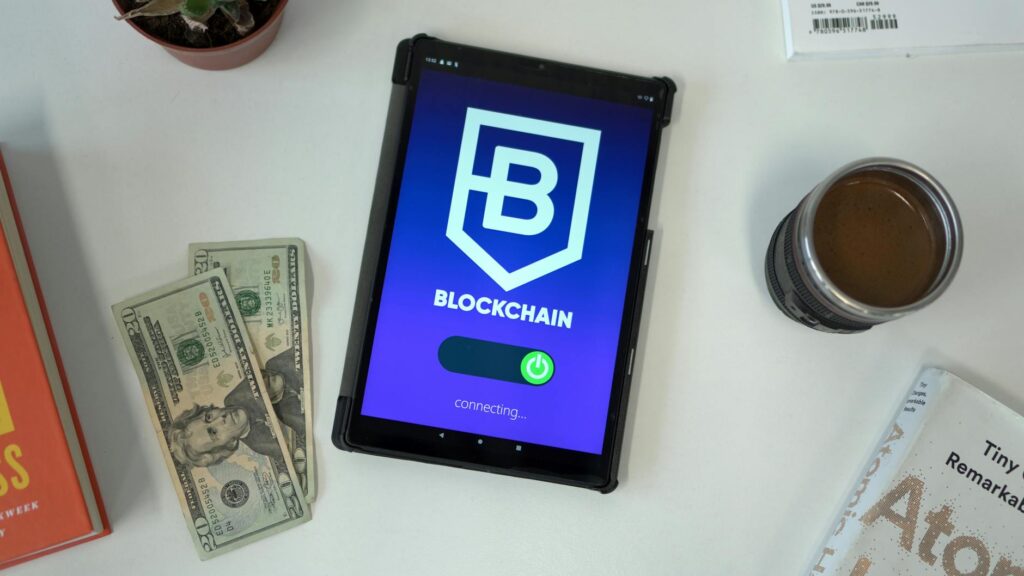The Unseen Force: How Generational Change is Fueling the Digital Asset Revolution
There’s a quiet revolution happening. It’s not on the front pages every day, and it’s not just about a new token hitting an all-time high. It’s a deeper, more fundamental change in who has the money, how they think about it, and where they’re putting it. We’re talking about how shifting demographics are becoming the single most powerful, long-term driver of capital into the digital asset class. It’s not just a trend; it’s the beginning of a tectonic shift in global finance, and it’s being led by a generation that grew up with a smartphone in their hand and a healthy dose of skepticism for the old ways of doing things.
Forget the day-to-day price charts for a moment. The real story is the ‘Great Wealth Transfer’—an estimated $84 trillion expected to pass from Baby Boomers to their Millennial and Gen Z heirs by 2045. But this isn’t just about money changing hands. It’s about mindsets changing. The beneficiaries of this transfer don’t view the world through the same lens as their parents or grandparents. Their trust is placed differently. Their definition of an ‘asset’ is radically broader. And that changes everything.
Key Takeaways
- The ongoing ‘Great Wealth Transfer’ will see trillions of dollars move to younger, more digitally-native generations who are significantly more inclined to invest in digital assets.
- Millennials and Gen Z have a foundational distrust of traditional financial systems, stemming from events like the 2008 financial crisis, making decentralized alternatives more appealing.
- Being ‘digital natives,’ younger investors intuitively understand and value digital ownership, scarcity, and community in a way previous generations often don’t.
- The investment philosophy is changing from slow, steady wealth preservation to a higher-risk tolerance in search of asymmetric returns, a profile that fits the volatile crypto market.
- Legacy financial institutions are being forced to adapt by offering crypto products to avoid losing the next generation of clients.
The Old Guard vs. The New Wave: A Tale of Two Investors
To really get what’s happening, you have to picture two different investors. Let’s call the first one David, a Baby Boomer. David built his wealth the traditional way. He worked a 40-year career, maxed out his 401(k), and invested in a diversified portfolio of blue-chip stocks, bonds, and real estate. His financial advisor is a friend from the golf club. For David, an asset is something tangible, something you can see and touch, or at least something backed by a century-old institution with a marble facade. The idea of a purely digital, decentralized asset sounds like something out of a science fiction novel. Risky. Unproven. Frivolous.
Now meet Maya, a Millennial. Maya saw her parents lose a significant chunk of their retirement savings in the 2008 financial crisis. She graduated college with a mountain of student debt into a gig economy. Her ‘office’ is a laptop, and her ‘community’ is on Discord and Twitter. She doesn’t have a financial advisor; she has a network of pseudonymous experts she follows online. For Maya, the ‘proven’ system is the one that failed her parents and saddled her with debt. She trusts code more than she trusts corporate boards. The idea of a digitally scarce, globally transferable, and censorship-resistant asset isn’t just interesting—it’s logical. It’s the native currency of the internet she’s lived in her entire life.
This isn’t just a caricature; it’s a reflection of a massive divergence in experience and worldview. And that divergence is directing capital flows. While David is focused on preserving wealth, Maya is focused on building it, often with far less capital to start with, which naturally pushes her towards assets with higher potential (and higher risk) upside.

Why Millennials and Gen Z Are All-In on Digital Assets
It’s not just one thing. It’s a perfect storm of cultural, technological, and economic factors that have made younger generations the primary adopters of cryptocurrencies and other digital assets.
Born Digital, Investing Digital
Think about it. For anyone under 40, the line between the ‘real’ world and the ‘digital’ world has always been blurry. They had social media profiles in high school, bought digital items in video games, and managed their friendships through messaging apps. The concept of digital ownership isn’t strange; it’s second nature. Owning a piece of a decentralized network (like Bitcoin or Ethereum) or a unique digital collectible (an NFT) is a natural extension of a life lived online. They don’t have to overcome the mental hurdle of ‘it’s not real if I can’t hold it’ because so much of their life’s value already exists in a non-physical space.
The Scars of 2008: A Crisis of Trust
You can’t overstate the psychological impact of the 2008 financial crisis on Millennials. They watched as massive, ‘infallible’ institutions were bailed out by taxpayers after taking catastrophic risks. This event shattered the illusion of a stable, trustworthy financial system. It planted a seed of doubt that has grown into a full-blown crisis of faith in centralized authority.
Cryptocurrencies, particularly Bitcoin, were born directly from the ashes of that crisis. The genesis block of Bitcoin famously contains a headline from The Times: ‘Chancellor on brink of second bailout for banks.’ It was a mission statement. This new system was designed to be an alternative—one that didn’t require trusting bankers or politicians. For a generation primed for distrust, that message was—and is—incredibly powerful.
The Search for Asymmetric Upside
Let’s be honest about the economic realities. Younger generations face stagnant wages, soaring housing costs, and a much harder path to financial security than their parents did. The old playbook of ‘get a safe job and invest in the S&P 500’ doesn’t seem to promise the same results. It feels like a game that’s already been won by a previous generation.
Digital assets represent a new game. It’s a field with different rules—or, in some cases, no rules at all. It offers the potential for ‘asymmetric returns,’ where a small investment could potentially lead to life-changing wealth. While incredibly risky, that possibility is a powerful magnet for those who feel the traditional system has left them behind. It’s a high-stakes bet on a different future, and millions are willing to take it.

Understanding the Shifting Demographics and Their Financial Impact
The numbers behind these trends are staggering and paint a clear picture of where the money is headed. It’s not a trickle; it’s a floodgate that’s just beginning to open.
The ‘Great Wealth Transfer’ is a Trojan Horse for Crypto
As that $84 trillion begins to change hands, investment strategies will change with it. A financial advisor who tells a 35-year-old inheritor to put everything into municipal bonds is going to lose a client. Studies consistently show that a significant percentage of Millennial millionaires already hold a substantial portion of their wealth in crypto. As their net worth grows through inheritance, it’s logical to assume their allocation to digital assets will grow in absolute terms.
What does this mean? Even a small percentage of this massive wealth transfer finding its way into digital assets would represent a capital influx of trillions of dollars. It’s a permanent, structural bid for the asset class that is completely independent of short-term market sentiment.
The Creator Economy and Web3
Another huge demographic driver is the rise of the creator economy. Gen Z doesn’t just consume content; they create it. They are YouTubers, TikTokers, Twitch streamers, and digital artists. Web3 and NFTs provide, for the first time, a way for these creators to directly monetize their work and their community without relying on centralized platforms that take a huge cut.
“According to a recent survey, 58% of Gen Z and Millennial investors in the U.S. feel that cryptocurrencies are a viable long-term investment, compared to just 24% of Gen X and 9% of Baby Boomers. This isn’t a small gap; it’s a chasm.”
This demographic isn’t just investing in digital assets; they’re building the new economy on top of them. For them, NFTs aren’t just speculative JPEGs; they’re concert tickets, membership passes, and digital property rights. This deep, functional integration ensures that digital assets become an indispensable part of the internet’s future—a future this generation is actively constructing.
What This Means for the Future of Finance
This demographic shift is not happening in a vacuum. The entire financial world is being dragged, sometimes kicking and screaming, into this new reality.
Legacy Institutions Are Taking Notice
BlackRock, Fidelity, JPMorgan—the very pillars of the traditional finance world—are all making moves into the digital asset space. Why? Because they can read the writing on the wall. They know that to remain relevant and capture the next generation of clients, they have to offer exposure to this asset class. They risk becoming the Blockbuster Video of finance if they don’t. Their entry not only adds legitimacy but also builds the on-ramps and infrastructure needed for even more capital to flow in from more cautious, mainstream investors.
The Political and Regulatory Landscape
Politicians are also starting to wake up to the fact that ‘crypto owners’ are a large and growing voting bloc. As more people, especially young people, have a financial stake in the success of digital assets, the political calculus around regulation begins to change. Harsh, prohibitive regulation becomes politically more difficult when millions of your constituents own the asset you’re trying to regulate. This creates a feedback loop: demographic adoption leads to more favorable political outcomes, which in turn encourages more adoption.

Conclusion
When you zoom out from the noise of daily market fluctuations, the long-term picture becomes incredibly clear. The flow of capital into the digital asset class isn’t being driven by hype or a get-rich-quick mentality, not fundamentally. It’s being driven by a profound and irreversible demographic shift. It’s powered by a generation that is digitally native, inherently distrustful of the status quo, and desperately searching for a financial system that feels like their own.
This isn’t just another asset class; it’s the financial manifestation of a generational worldview. The money is following the mindset. And as the largest wealth transfer in human history continues to unfold, that mindset is poised to reshape the very definition of money and investment for decades to come.
FAQ
Are older generations also investing in crypto?
Yes, but at a much lower rate and often with different motivations. While some Baby Boomers and Gen X investors are getting involved, they typically allocate a much smaller percentage of their portfolio and may see it more as a speculative ‘flyer’ or an inflation hedge, like digital gold. Their adoption is not the primary driver of the market in the same way as the widespread, culturally-integrated adoption by Millennials and Gen Z.
Is it too late to invest in digital assets given this trend?
While the days of buying Bitcoin for a few dollars are long gone, the demographic trends discussed here are still in their very early innings. The ‘Great Wealth Transfer’ will take place over the next two decades. The build-out of Web3 and the digital economy is just beginning. Many experts believe that we are still early in the overall adoption curve. However, the asset class remains highly volatile and risky, and any investment should be made with caution and thorough research.


